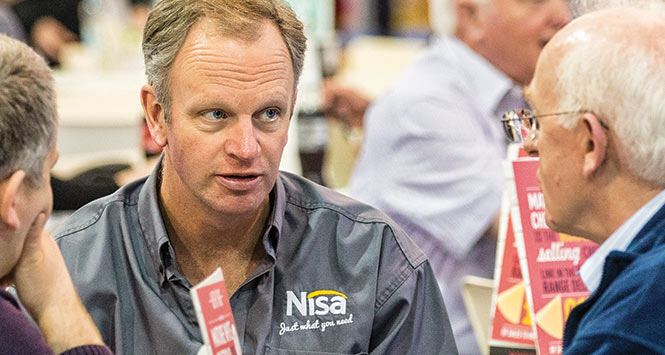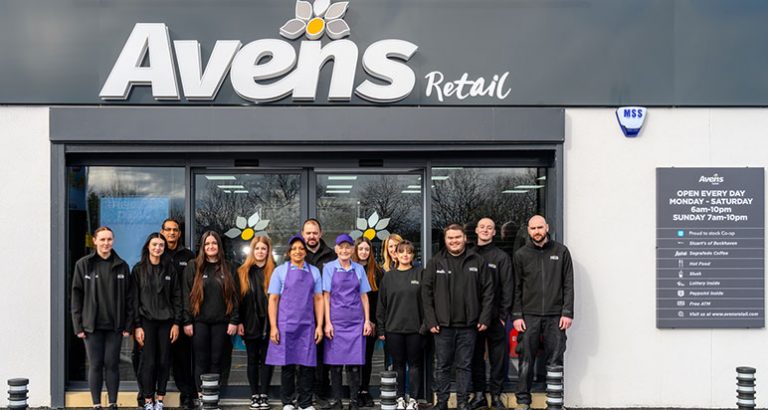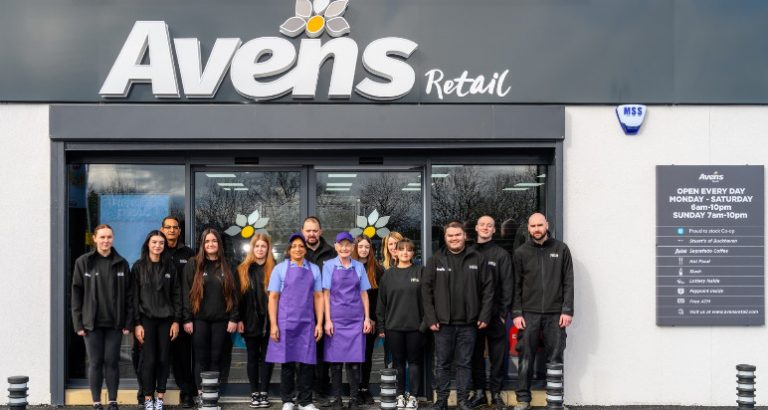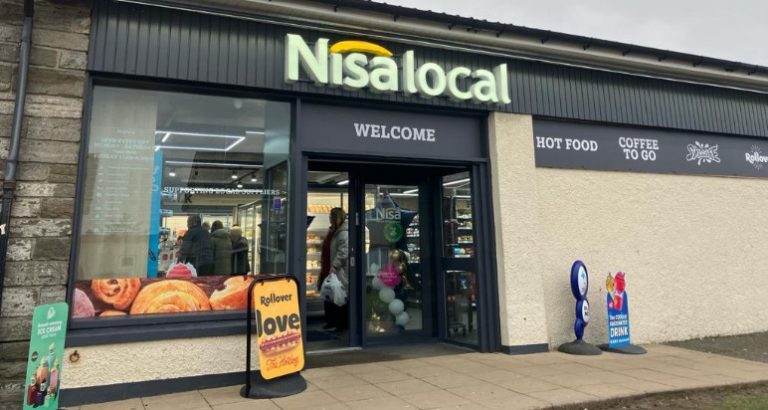Nisa’s new CEO last month addressed members during the symbol group’s first exhibition since the departure of Neil Turton. The following day, in the wake of the critical Myners report, Nick Read spoke candidly to SLR about his vision for Nisa and his early impressions of the group.
by Kevin Scott
To describe the last 12 months for Nisa as tumultuous would be something of an understatement and yet it’s a testament to the strength of the group that it remains in a strong position despite the loss of its biggest customer, the departure of its long-standing CEO, and most recently, a damning report into its practices.
To understand where Nisa is going, first we must understand where it has been. Firstly, the loss of Costcutter and the departure of Neil Turton are not linked, with Turton only recently leaving to help set up him! International with Tom Fender. In fact, one of his last major moves as Nisa CEO was to win the contract to supply McColl’s, which offset the loss of Costcutter to a certain degree.
Then in February, before Turton left, 18 year-old Scottish retailer Harris Aslam and his cousin Raza Rehman were both forced to resign from the board following a data leak.
Despite this upheaval, a total of 545 stores joined Nisa in 2014 (including 270 former Costcutter stores – a group with its own problems to contend with since the split), while the group’s symbol estate grew by 5% over the same period.
This then is the environment that new CEO Nick Read has settled into since starting work in February. Read began his career at Aldi and at one point in an impressive CV was Customer Service Director at Tesco. Stints as Commercial Operations Director at Vodafone UK and most recently Group Customer Service Director at Thomas Cook prepared him for his first CEO position.
By his own admission he is a corporate man, so running a mutual like Nisa will therefore bring fresh challenges.
“I came in underestimating how critical the membership was,” he admits. “It sounds a bit naïve but I didn’t really appreciate their role in the development of our plans.”
He admitted that the short time he’s been at Nisa has been intense. “Everything in a listed business is about quarterly numbers and how they’ll be presented,” he says. “That stopped a lot of short term activity because there’s so much focus on what would be said in 13 week’s time. That doesn’t apply here, but the intensity of members’ involvement makes decision making more challenging.”
Read met with SLR on the second day of Nisa’s annual exhibition in Stoneleigh, the morning after a gala dinner that began with Read providing the 800-strong throng with a brief but forthright summation of where he thought Nisa was going wrong – as well as commending where he believed it was doing well.
This came on the back of a review of the organisation by Lord Myners which when published, claimed the group to be ‘uninformed’, ‘confused’ and ‘weak’ when it came to governance.
The report, which was sent to all Nisa members, was commissioned in February and led Read to reduce to seven the number of executives among a number of senior management changes. This resulted in Format and Development Director Raj Krishan, Finance Director Simon Webster and IT Director Wayne Swallow all leaving the business.
“By making the senior team more cohesive, smaller and leaner, I’m signalling to the business very clearly that it doesn’t have to be so flabby. We can make clearer communications and get things done in a better way when accountability is very clear,” he says. “I don’t like using the word professionalism, but that is a skill I bring to the organisation having come from a corporate background.”
When Costcutter left in June 2014 Nisa lost 30% of its turnover. McColl’s and recruitment has made up the bulk of that loss, but it’s also had a material impact on Nisa’s business, as Read explains. Scales change, the distribution network changes, logistics change – in short, it’s a different business. “We’ve had incremental growth year after year since the business began and then a year where it was pretty challenging, so making sure the right people are in the right roles is more important,” says Read. “Quite often when you’re growing and growing you don’t worry too much about the small detail. But actually, when that growth stops suddenly you have to reassess and have a closer look at the set up.”
Read has been engaging directly with members and says he will continue to do to so. A members’ survey was launched at the exhibition and aims to gain a clear insight into Nisa membership by asking thorough questions regarding all key areas of the business. Read says it will form the backbone of Nisa’s future strategy and help determine where the company can add value for members by assessing areas in which it excels and other areas where it can develop further.
“We’re in the business of making money for members, not from members,” he says. “The hearts and minds and building of relationships will be very different [to the corporate world] and that’s something I have to get my head around.”
What Read says has been the most welcome surprise has been the number of members who have said how proud they are of Nisa. “That bond of trust between two businesses is just critical,” he says. “Coming from big corporations where you have store managers who comply – for want of a better word – I suddenly realised that the relationship between Nisa and the members is much more complicated. It’s more about sharing and learning and building relationships, encouraging and taking people with you rather than that old school style of command and control retailing.”
So what, in Read’s view, are the strengths of the organisation? “When members say the availability is fantastic, on time delivery is fantastic, don’t meddle with that. We provide choice and I was pleasantly surprised at the size of our range: 13,000 SKUs. Whatever way you dress it up, that’s big.”
Over the next few months Read says he’ll be addressing where the growth opportunities lie, and where Nisa wants to position itself in the grocery industry. “The only way I’m going to grow membership participation in Nisa is by getting the range right, the prices right and the value right – that’s our job. We’ve probably drifted a bit from that.”
Looking at the business from a consumer perspective and Read says that across convenience there is a focus on brands and what he calls Known Value Items (KVIs). “Those are the areas where we’ve got to focus: price, our promotional strategy and everyday low pricing.”
Read also says he’s been impressed by the quality of the Heritage own-label range, but the focus for the trading team will be to secure supplier contributions that will be reinvested in brands and KVIs. “That’s a core strategy at the start of our financial year; we need to invest in price to make sure key lines are competitive.”
Areas that Read believes need more fundamental change are operations, and in particular, communications. He says he will bring together disparate parts of the business: distributions, IT, stock control and member services. He explains that by doing this, the field team will be able to get out and work with members, “explaining the range, the value, and what convenience means today”.
Over the course of the interview the word ‘simple’ comes up time and again. “Operational simplification”, “contractual simplification”.
“Simple has a number of different connotations,” he explains. “The first is for members to not even realise changes are happening; I hope they don’t even notice the simplification of the operations.”
The second of these connotations is contractual, and it’s one where the path to simplification will be anything but simple. “Are the terms open, transparent and fair? I think that’s where the waters have been muddied over the years,” says Read. “I want to be more open about that. There’s an undercurrent of suspicion in the membership about some getting better deals than others and better terms.”
This could set a dangerous precedent: as Read himself admits, a single unit operator can’t expect to be paying the same as McColl’s with 515 shops. “It happens in any business, but I want to create a bit of openness. Is everyone going to be really happy in three months? No. Will they be a bit happier? I certainly hope so.”
So simplification is key – make pricing more transparent, drive loyalty among members, get retail prices right, get the range right, deliveries on time… “I was going to say ‘it’s not that complicated’ but it’s bloody complicated! Those are the things I believe are very important to our business though.”
The end goal is that more members will buy more directly from Nisa, but of their own volition. “I don’t want to force them to buy from Nisa – that’s the wrong way. I want retailers to buy from Nisa because we have a better deal.”
On the communications front, again Read sees a split between operations and what he calls the “open, honest, worthy” communications.
“One of our challenges is that there are just so many ways to get in touch our retailers,” he says, “One discipline we’ve got to get is that not everyone has automatic access to bombard our members, so there’s to be a streamlining in the channels of communications.”
The simple – that word again – solution is effective communications that are appropriate at the right time. “Members are saying they’re overwhelmed by the information they get,” he admits.
The aim is to make better use of technology – whether that is hosting webinars to explain operations changes or communicating messages around proposition and price, to texting spot deals to members who can reply if they want to buy. “We need to be a bit smarter at how use technology,” he admits.
Part of the communications mix will be an increase in transparency, another recommendation of the Myners report. That will include publishing board minutes and re-establishing regional meetings and the retail council. “I’m not saying members should run the business, but they’ve got to be heard, they’ve got to challenge the executive.”
The job at Nisa is Read’s first foray into convenience, but from his roles at Aldi and Tesco, he is familiar with the grocery industry. During his time at Tesco he was responsible for customer service and central distribution and his thoughts on the retail giant’s attitude to convenience retailing is telling.
“At Tesco in 2006 the convenience sector was the poor bedfellow in the organisation… the Express format was still very much an afterthought. It wasn’t sophisticated; it was a cut down version of what we did in a superstore, so it’s fantastic how the sophistication and innovation in convenience in the last six or seven years has grown.”
Almost a decade on from this, what does he think of the huge changes in convenience, both at Tesco and overall? “The level of customer expectation in the convenience sector has absolutely stormed since the last time I worked in retail,” he says.
When asked if this was driven by the mutiples or consumer behaviour, Read admits that although the vast investment in convenience from the multiples was the initial driver, this has been superseded by the changes in customer behaviour, largely influenced by the recession.
“I was intrigued when I read how [Tesco CEO] Dave Lewis said Extra stores were driving Tesco’s revival – the world of the big box supermarket pulling them out the mire. Can you really substantiate that?” asks Read. “He would say sales are starting to increase in those formats but I’d argue that he’s massively dropped his prices, flooded big stores – sales may be up but they’re not making any more money.”
Making money is of course the bottom line, as it were, but the role that independents can play in their local communities is a genuine point of difference, says Read. “Making A Difference Locally is an important pillar for Nisa. It’s a fantastic, under-promoted charity, and it does keep triggering in my mind how we have to help our members be more ‘local’ because the local service, neighbourhood, community piece is going to be another area we can legitimately say ‘this is our space’.”
Read’s willingness to make right what he believes is wrong with Nisa is admirable. So soon into a role that is a major change for him, there is an enthusiastic air around him, rather than a confident one. Seeing how this corporate executive will cope with dealing with the challenges of running a mutual will certainly be fascinating.
“I want to make our members profitable, as that makes us profitable,” he concludes. “It’s not just about acquiring new members, it’s about getting existing members to buy more from Nisa. That’s at the root of everything I’m doing.”





